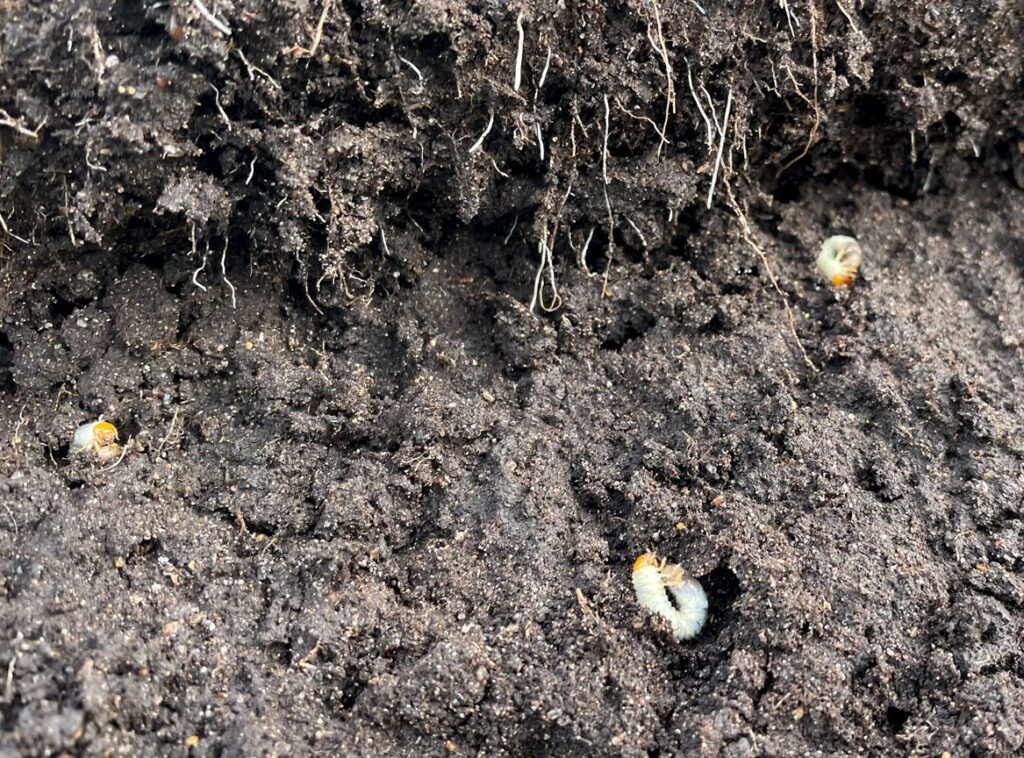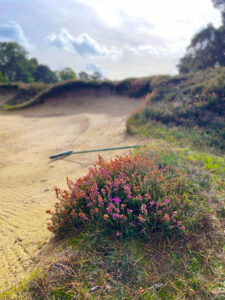Ever wondered how courses in the U.K. and U.S. compare? We took a little trip to find out and learn more about how our European friends survived an awful summer.
By Pat Jones
A few weeks ago, I was standing on the windy 1st tee at Royal Liverpool GC (better known as Hoylake) surveying the stark beauty laid in front of me and shaking my head. I glanced around at my companions and said – for the millionth time – I just can’t believe the places golf has taken me.
I count myself lucky to have traveled the world thanks to accidentally getting a job at GCSAA back in 1987. Memorable trips included Bangkok, Tokyo, Rio, Rome, Singapore, Paris, Barcelona, Mexico City and, of course, lots of visits to England, Scotland, Ireland, and Wales – all because I didn’t stink at writing about turf and turfheads. Go figure.

But those trips were often for events or meetings. I too rarely had the chance to do what I love most: just visit golf courses, poke around and find out how they do things. That’s why my recent trip to England was so special. The whole point was to explore courses and ask dumb questions, like “How the hell did you survive the record heat and drought last summer?” or “How on earth do you produce this level of quality with financial constraints and a small multi-skilled team?”
Yet that was exactly what my friends at Aquatrols asked me to do. We’ll be publishing a series of articles and videos about what we learned from visits to courses and a couple of noted turf research facilities during a jam-packed five days. But before we get to that, I wanted to give you a bit of a trip report to put the whole adventure in context.
How UK Courses Differ from US Courses
First, remember that there are about 3,300 courses in Great Britain/Ireland. That’s about a quarter of what we have in the U.S. Also remember that most courses there are private clubs versus the U.S. where 70% of facilities are public-access businesses selling a round of golf for $40 or $50.
But the big differences between the UK and US come when you start looking at resources. It’s hard to find comparable budget numbers but I’m going to make a wild guess and say that the average course in England has an annual maintenance budget (including labor) of about $350,000 annually. The average maintenance budget here is triple that…about $900,000. Yes, the top 100 or so courses in the U.K. have budgets comparable to a good U.S. country club but most facilities there operate for around $200,000 per year.
Those average English clubs have 5-6 turf staff members, including the head greenkeeper or course manager position that’s equivalent to superintendent or director of agronomy titles in the U.S. And, like their American counterparts, managers are struggling mightily to find enough people to work for what they must pay.
A Different Approach to Agronomics
Another big difference, both agronomically and in terms of expense, is disease control. It’s just not the issue that it is in the U.S. They deal mainly with things like fusarium patch (microdochium) and anthracnose but dollar spot and pythium are still relatively infrequent. Fairy ring is everywhere but it’s largely ignored by greenkeepers and golfers since the damage is often only aesthetic. It’s simply part of the turf biome there. So, while the average U.S. golf course spends $45,000 on fungicides, the budget for disease management at an English course might be $2,500 or so.
Here’s the interesting thing about disease control: they can’t buy or use ANY contact fungicides. Both the U.K. and European Union have heavily restricted pesticide use for “aesthetic” purposes. So, greenkeepers must get very creative with cultural solutions and alternatives. We’ll talk more soon about how Aquatrols and Redox products play a role in allowing turf to thrive without chemicals.

The bigger issues in the UK and Europe are insect related. Worm castings are a huge problem in spring and fall, as are leather jackets (larvae of crane flies). There are zero legal chemical controls for earthworms and grub management insecticides are very limited. And the European Union recently announced they plan to restrict turf pesticide products even more heavily beginning in 2024. Britain is no longer part of the EU but folks I spoke with say they wouldn’t be surprised to see similar restrictions in the future.
Sustainability is Critical to Overall Success
Sustainability is everything there, and not just because they are focused on the environment. Financial sustainability is just as critical when you’re trying to manage an 18-hole club with $200,000, four people and few if any chemical inputs. So, the goal among the best head greenkeepers is to find ways to reduce or eliminate those costs, starting in some cases with increasingly pricey nitrogen fertilizer.
Probably the number-one thing I heard from turfheads around England was nitrogen reduction. Less growth from N equals less mowing and fewer problems. Several whom I talked with suggested that Redox programs allow them to reduce nitrogen and manage thatch, two huge issues they would normally struggle with.
The other thing I heard loud and clear was that they relied heavily on wetting agents during the “summer from hell” they just completed. Many let fairways go during unprecedented heat and drought, but the greens…the greens were still terrific thanks to Revolution, Zipline, and great support from the Aquatrols agronomy team there.
Offering Solutions Across the Pond
The trip also reconfirmed what I’d long known: Aquatrols is one of the few truly global companies in our happy little industry. Most of their products are available on both sides of the Atlantic and, more importantly, the people and the support they provide are strong worldwide. Their reps and technical people are highly respected throughout Europe because of their agronomic knowledge and the science Aquatrols always brings to the table.
We plan to do more of these tours in different places around the U.S. and Europe in the coming year. Stay tuned to find out where I’ll be poking around next and, as always, keep in touch with your Aquatrols team to find out what they’re cooking up next.



Comments are closed.